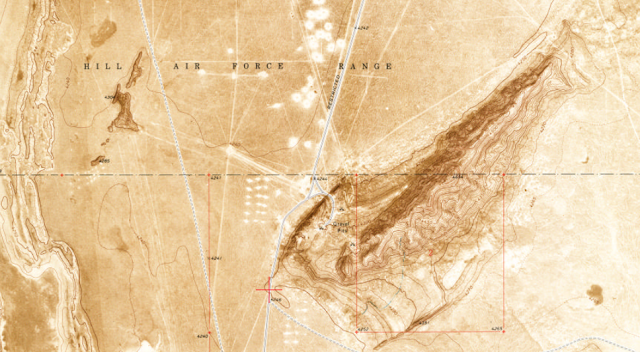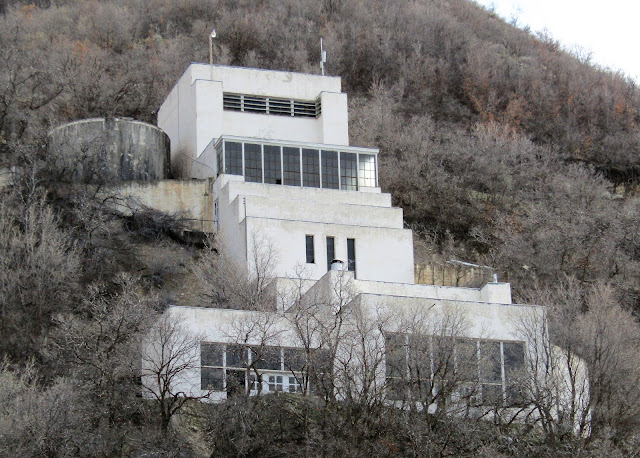The Phantom Wye
by Peter
In railroad terms, this structure is known as a wye. Wyes were used to connect two rail lines, or, in the case of a turn wye, to allow essentially a three-point turn by a train. This wye lies right on the edge of the Great Salt Lake, about 2 miles north of I-80. Looking at the area today, it's hard to see what it was leading to. The main line leads to the east, but it branches to both the north and the south. Saltair was fairly close to the south, but had the main line of the Salt Lake, Garfield, and Western railroad leading directly to it. A competitor in this location seems unlikely.
My best guess is that the southern line is a stub to allow trains to turn around, making this a turn wye. The two northern tracks both lead to an area of abandoned salt ponds. If you look a bit to the north, you can see the unnaturally straight lines. A train would have come out of Salt Lake City, possibly from the Union Pacific's downtown yards and pulled into the salt operations to the north. After being loaded with fresh salt, they would back down the track to the wye, and then pull forward back onto the track to Salt Lake City.
There are a lot of interesting stories about Utah railroads. You can read about the School and Institutional Trust Lands Administration's efforts to preserve the Spirit Railroad, or about the archaeology of Chinese railroad workers on the transcontinental railroad.
Railroads were enormously important in the history of Utah and the United States in the 19th Century. They connected the country and shortened the distance between towns. In Utah, they brought an influx of non-Mormons and encouraged the growth of mining and other industries. Like highways today, they stretched their tendrils to anywhere that needed freight or passenger access. Although many of these railroads that aren't mainlines have now been closed and removed, their impact can still be seen in development patterns, the location of trails and transit, and in the traces they leave on the landscape.
In the same area, read about the Jeep Ranges at the Salt Lake Army Air Base.
In the same area, read about the Jeep Ranges at the Salt Lake Army Air Base.
West of Salt Lake City, several rail lines were built to access lucrative freighting and passenger opportunities at the Garfield smelter, the salt beds on the Great Salt Lake, and the Saltair resort.
An interesting artifact of one of those lines can be seen on aerial photographs. I have not been able to figure out where this line once connected, or which railroad it belonged to.
In railroad terms, this structure is known as a wye. Wyes were used to connect two rail lines, or, in the case of a turn wye, to allow essentially a three-point turn by a train. This wye lies right on the edge of the Great Salt Lake, about 2 miles north of I-80. Looking at the area today, it's hard to see what it was leading to. The main line leads to the east, but it branches to both the north and the south. Saltair was fairly close to the south, but had the main line of the Salt Lake, Garfield, and Western railroad leading directly to it. A competitor in this location seems unlikely.
My best guess is that the southern line is a stub to allow trains to turn around, making this a turn wye. The two northern tracks both lead to an area of abandoned salt ponds. If you look a bit to the north, you can see the unnaturally straight lines. A train would have come out of Salt Lake City, possibly from the Union Pacific's downtown yards and pulled into the salt operations to the north. After being loaded with fresh salt, they would back down the track to the wye, and then pull forward back onto the track to Salt Lake City.
There are a lot of interesting stories about Utah railroads. You can read about the School and Institutional Trust Lands Administration's efforts to preserve the Spirit Railroad, or about the archaeology of Chinese railroad workers on the transcontinental railroad.


Comments
Post a Comment